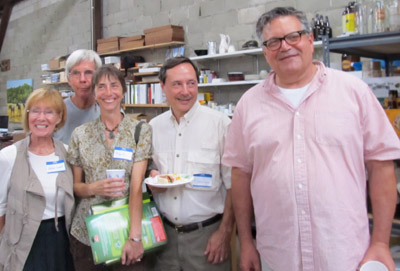A Bird Garden and a Challenge

By Peg Lindsay My husband and I are birders. People frequently stop us and ecstatically tell us about such-and-such a bird they saw at their feeders, or describe a bird and ask us to help identify it. When my neighbor had Mourning Doves nesting in her trellis, I thrilled at peeking at the baby doves and watching them change and grow. I get excited when I see the first “snowbird” blue-gray gnatcatcher return from its summer home up north. I feel joy when I hear the bugling call of sandhill cranes and proud when I see tiny chicks begin to toddle after their parents. My love affair with birds runs deep, to say the least. That said, it makes sense that I jumped to volunteer at the Palatlakaha Environmental and Agricultural Reserve (P.E.A.R.) Park Bird Garden. I had planned to write this article about all of the plants it contains, some of which are more bird-friendly than others. The species (listed at the bottom of this article) were selected for very particular attributes, includi...




